Do not remove the gear until you have completed all procedures to solve your problems. Remember the steering gear is only one part of a total steering system. Many factors outside the steering gear will affect steering performance.
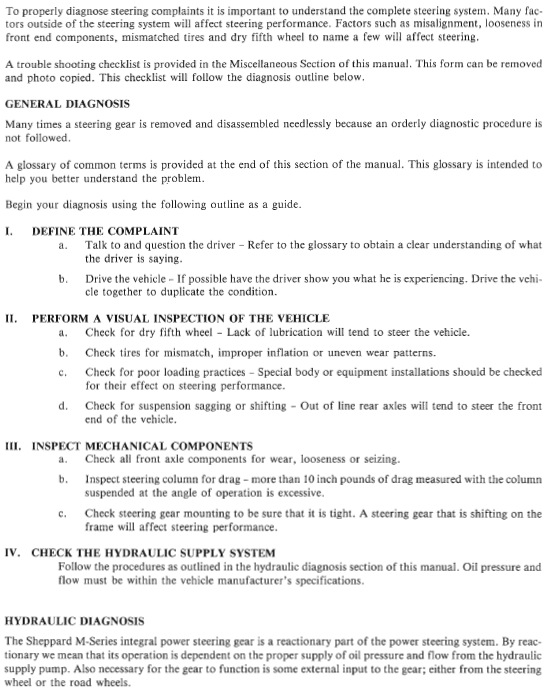
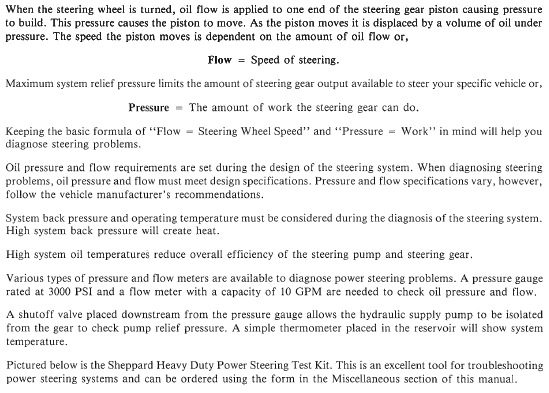
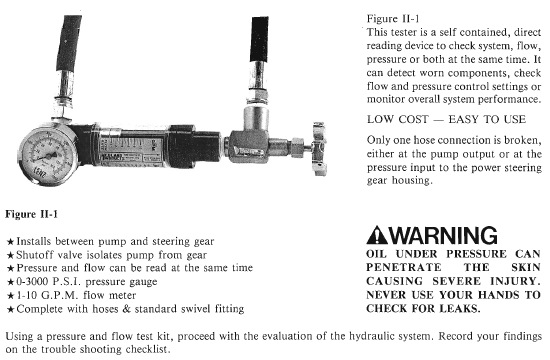
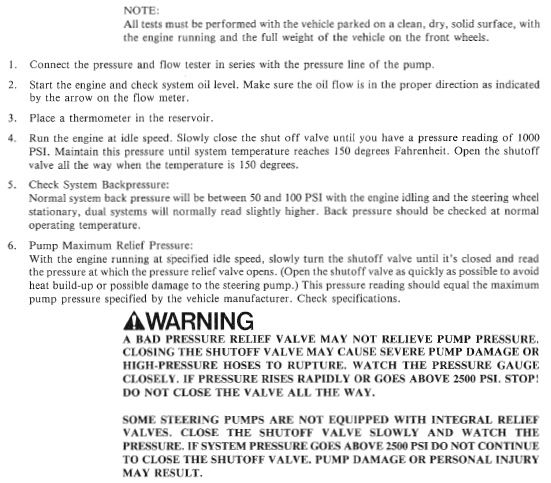
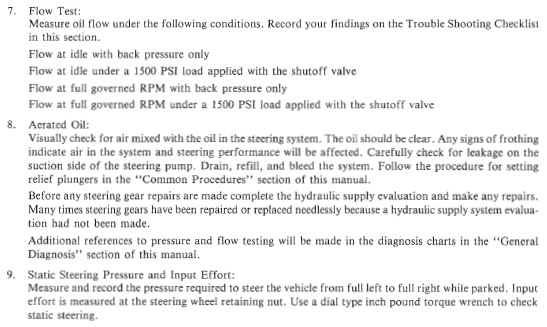
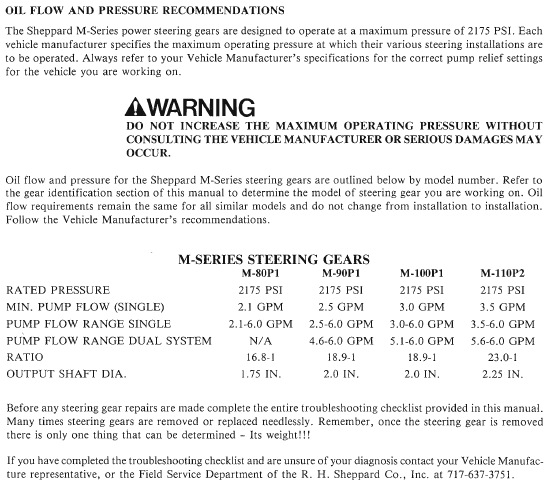
Common Complaints
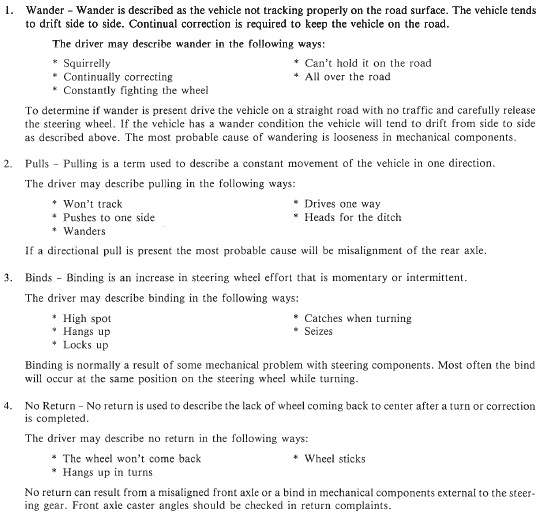
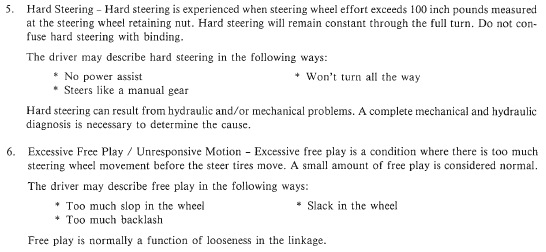
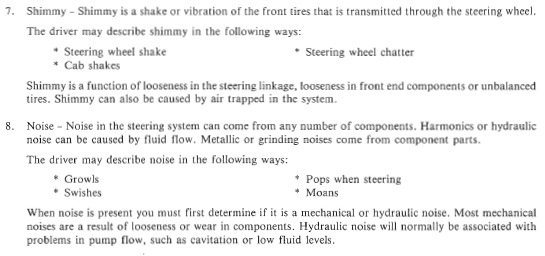
Glossary
1. Actuating Valve -Internal valve in the bearing cap of the steering gear. It is actuated by the steering wheel through the yoke connection of the steering column.
2. Back Pressure -The pressure found on the return side of the system.
3. Base Mounted Gear -The steering gear is mounted to the frame rail or bracket utilizing the eight mounting holes opposite the sector shaft cover.
4. Bearing Cap -End cap of the steering gear that houses the actuating shaft and valve.
5. Bearing Cap Cover -Small cover on the end of the bearing cap of the steering gear. The bearing cap cover houses the input shaft oil and salt seal.
6. Bleeder Screw -1181/ Allen screw located in the sector shaft bore of the steering gear.
7. Cavitation -bubbles that form in the oil which keep the pump from supplying pressure and volume.
8. Contamination -Dirt or other foreign material in a fluid.
9. Cylinder Bore -Long bore of the steering gear where the steering gear piston is housed.
10. Cylinder Head -The end cap of the steering gear bolted on the housing opposite the actuating shaft end of the gear.
11. Displacement -The volume of fluid that can pass through a pump or cylinder in a single revolution or stroke.
12. Feedback -A transfer of energy from the output of a device to its input.
13. Fluid Flow -The stream or movement of a fluid or the rate of its movement.
14. Piston -Is found in the cylinder bore and changes the hydraulic force to mechanical force in the steering gear.
15. Plunger -Slotted pins that are used to limit the travel of the steering gear piston under pressure. Plungers are located in the cylinder head and bearing cap.
16. Pressure Relief Valve -Optional pressure relief valve integral to the steering gear to limit system operating pressure. Identified by a large hex nut on the side of the bearing cap.
17. Pump -A device that converts mechanical force and motion into hydraulic fluid power.
18. Rack Teeth -The area on the piston that engages the sector shaft teeth.
19. Recirculating Ball Thread -The area of the rotary valve on which the 24 steel balls travel.
20. Relief Valve -A pressure control valve used to limit system pressure.
21. Sector Shaft -The shaft the pitman’s arm is attached to.
22. Sector Shaft Bore -Area of the steering gear that houses the sector shaft.
23. Slave Gear -Right-hand gear in a dual system application. Identifiable by a lack of an actuating shaft on either end of the steering gear.
24. Slave Ports -Threaded openings in the cylinder head, bearing cap and sector shaft bore to install the pressure lines to operate the slave gear.
25. Tab -Lock Retainer -Bolt assembly used to provide initial torque when installing the pitman’s arm. Uses alignment tabs that fit into the pitman’s arm and restraining tabs to be locked into the head of the retainer.
26. Volume Of Flow -The amount of fluid that passes a certain point in a unit of time. The volume of flow is usually expressed in gallons per minute for liquids.
TROUBLESHOOTING GUIDE
This section is designed to give you causes and possible remedies for the most common problems. Four (4) columns that give you the Symptom, Possible Cause, Remedy, and Reference are listed. You will see a letter after the Remedy and under the Reference column. Use the chart at the end of this section. Find the reference letter you need, this will show where the repair procedure may be found.
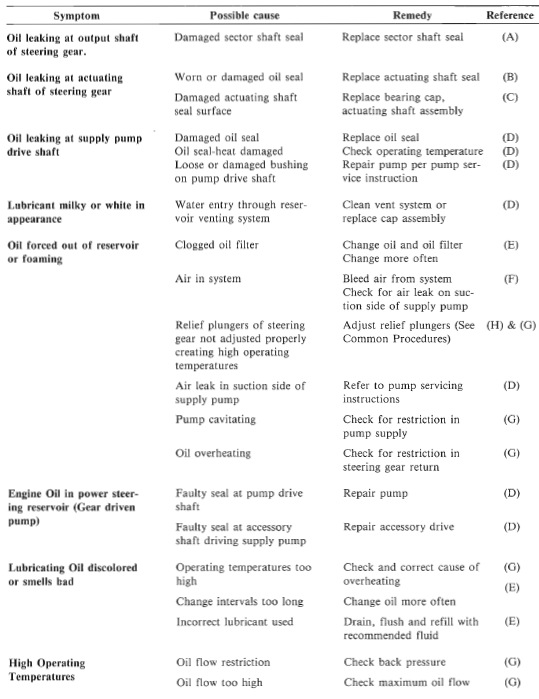
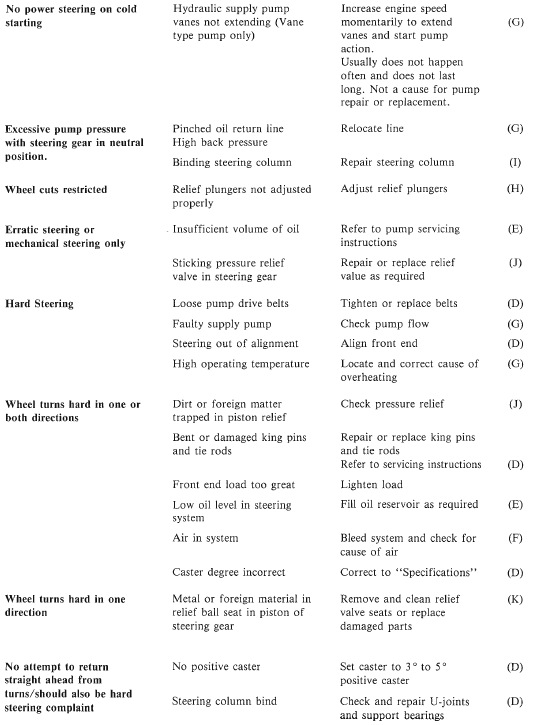
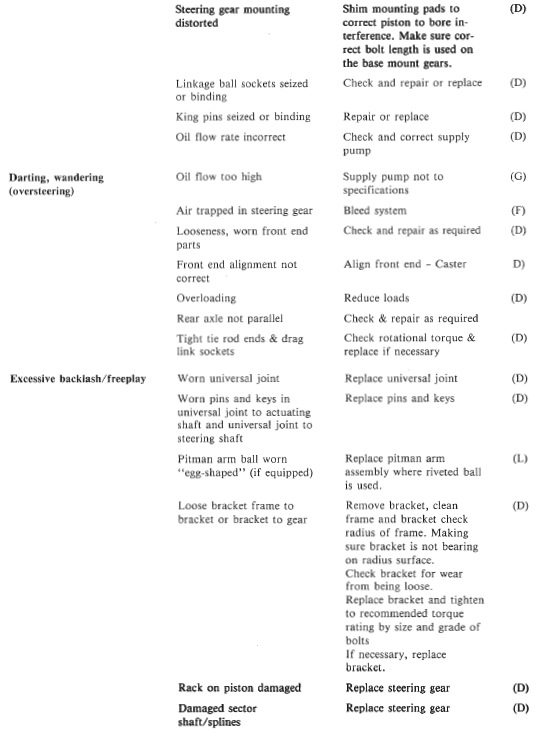
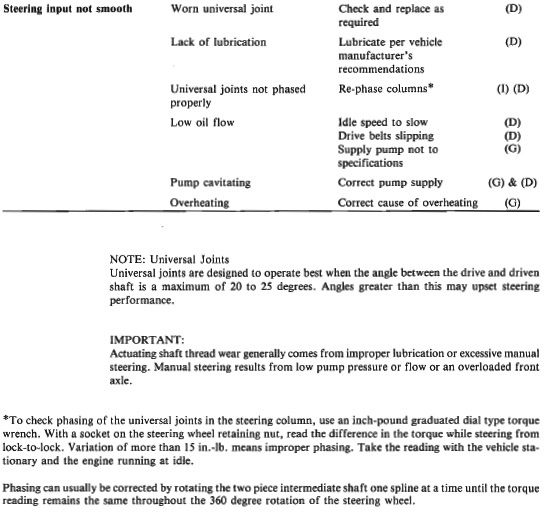
REFERENCE GUIDE
A. Reference photos IV-4 -IV-lO of the Disassembly section and photos VI-I4 -VI-19 of the Reassembly section of this manual.
B. Do not remove the gear. Refer to input shaft seal replacement in the “Common Procedures” section of this manual. (Pgs. III-7 -III-IS)
C. Reference to the Disassembly and Reassembly sections of this manual. (Pgs. IV -1 -IV -10 and VI-I -VI-II)
D. Refer to Vehicle Manufacturer’s Service Manual for information or procedure to repair.
E. Do not remove the gear. Refer to the Preventive Maintenance Procedure in the “Common Procedures” section of this service manual. (Pgs. III-2 -III-3)
F. Do not remove the gear. Refer to the Bleeding Procedures in the “Common Procedures” section of this manual. (Pgs. III-16 -III-I9)
G. Do not remove the gear. Refer to the “Hydraulic Diagnosis” section of this manual. (Pgs. II-2 -II-S)
H. Do not remove the gear. Refer to the Plunger Adjustment in the “Common Procedures” section of this manual. (Pgs. III-22)
I. Do not remove the gear. Refer to the Static Steering Pressure and Input Effort in the “Hydraulic Diagnosis” section of this manual. (Pgs. 1II-4)
J. Refer to the Pressure Relief Replacement in the “Sub Assemblies” section of this manual. (Pg. V-I)
K. Do not remove the gear. Refer to the Cleaning Relief Passage in the “Common Procedures” section of this manual. (Pgs. IlI-4 -III-6)
L. Do not remove the gear. Refer to Pitman Arm Replacement in the “Common Procedures” section of this manual. (Pgs. III-23 -III-29)